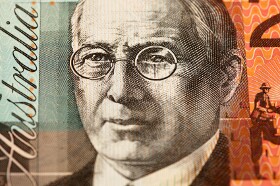The Australian dollar fell during the Thursday’s trading session as economic data from both Australia and its biggest trading partner, China, pushed the currency lower. The Aussie managed to erase losses versus the US dollar and the Japanese yen but retained soft performance against the euro.
The HSBC Flash China Manufacturing Purchasing Managersâ Index fell from 49.6 in March to 49.2 in April while analysts promised it to stay almost unchanged. The gauge touched the lowest level in a year.
Reports from Australia were no better as National Australia Bank reported in its quarterly survey that business confidence dropped. Wednesday’s reports were a tad better, showing that consumer inflation remained stable at 0.2 percent in the first quarter of 2015.
Traders watch Australia’s economic indicators closely trying to guess whether the Reserve Bank of Australia is going to cut interest rates in the near future. Worse-than-expected indicators increase probability of an interest rate cut, and this can drive the Aussie (as the Australian currency is nicknamed) lower.
AUD/USD went up from 0.7752 to 0.7774 as of 22:38 GMT today after falling to the daily low of 0.7710 earlier. AUD/JPY bounced to 93.01 following the drop from 92.97 to 92.54. At the same time, EUR/AUD rallied from 1.3817 to 1.3906.
If you have any questions, comments or opinions regarding the Australian Dollar,
feel free to post them using the commentary form below.
